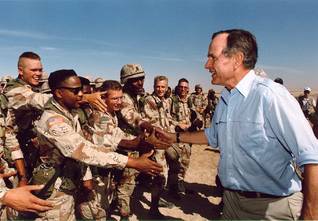After the crushing defeat in Kuwait, many in Iraq asked themselves whether the regime of Saddam Hussein could survive politically. It seemed initially that it could not. Shortly after the headlong retreat from Kuwait, the Shiite Arabs in the south and then the Kurds in the north rose in revolt. The revolt in the south was begun by mutinous Iraqi troops retreating in defeat from Kuwait.
The revolts by Shiites and Kurds were more than attempts to rid themselves of the oppressive regime: they were also an attack on the political structure of the state of Iraq, the stakes being a fundamental redistribution of political power among the sectors of the population. It is for this reason that the Sunni Arabs remained aloof from the revolt, although many of them, too, had been victimized by the regime. They feared that they would lose out, particularly to the Shiites, in any redistribution of political power.
In the weeks that followed, the regime succeeded in regaining control of the country, section by section.


The anti-Iraq coalition, which at that point still occupied 20 percent of Iraq’s territory, allowed Baghdad to do so. Despite US President George H.W. Bush’s call, during Operation Desert Storm, for the Iraqis to rise up against Saddam Hussein’s regime, the anti-Iraq coalition did nothing when Iraq’s military put down the revolts with extreme violence, using helicopters, tanks, and artillery. This passive attitude was prompted by fears that Iraq would crumble as a political entity, or that, if it did not, the Shiite Arabs would assume a dominant position in any new Iraq. The detached complicity with the regime and its dramatic consequences caused a new dent in the image of the United States in Iraq, at least among the Shiites, who were abandoned to a violent fate.

